Many of the early mines in Newcastle delved downwards to reach their coal via a vertical shaft, with an iconic poppet head structure overhead to haul men and materials up and down. In contrast, other mines were much simpler affairs, tunnelling sideways into a hill to reach a coal seam. Such was the Ebbw Vale Colliery, photographed by Ralph Snowball 125 years ago on 12 June 1897. Named after the mining district in Wales, this tunnel was located south of Adamstown, in the valley between present day Northcott Drive and Brunker Road.
From 1884 the New Lambton Land and Coal Company had been operating their “C” pit in that location, working a seam of coal below the valley via a 243 feet deep shaft. About 1886 the company opened new workings by driving a tunnel into the valley side. This sister mine, leased out under the tribute system, was initially known as “New Lambton Tunnel” but was renamed “Ebbw Vale” in 1889. It was a small enterprise. When Snowball photographed the tunnel entrance in 1897 there were just 24 employees, including two under the age of 16. The miners extracted coal by manual labour, loading it into skips to be pulled up the incline of the tunnel by a winch cable.
After New Lambton “C” pit closed in 1903, the adjacent Ebbw Vale mine expanded, the workforce reaching a maximum of 211 employees in 1908. With more men came more accidents, and in 1911 the mine acquired a hand wheeled ambulance on which a stretcher could be placed.
Although a number of accidents had caused serious injuries to miners over the years, it wasn’t until 1921 that the first fatality occurred, when a fall of stone from the roof crushed William Adamthwaite. Two more fatalities occurred before the mine ceased operation in 1931.
In 1945 the rail tracks from the mine down to Adamstown station were removed, and in the 1960s the area was subdivided. Streets and houses now hide all trace of the former Ebbw Vale colliery.
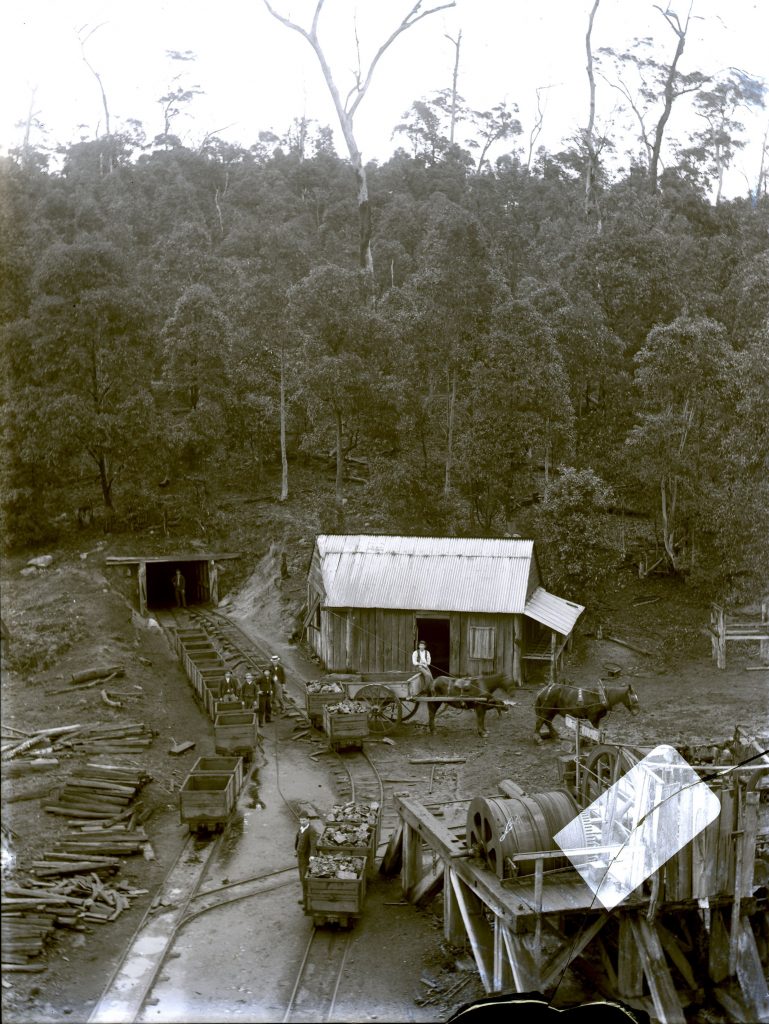
University of Newcastle, Living Histories.
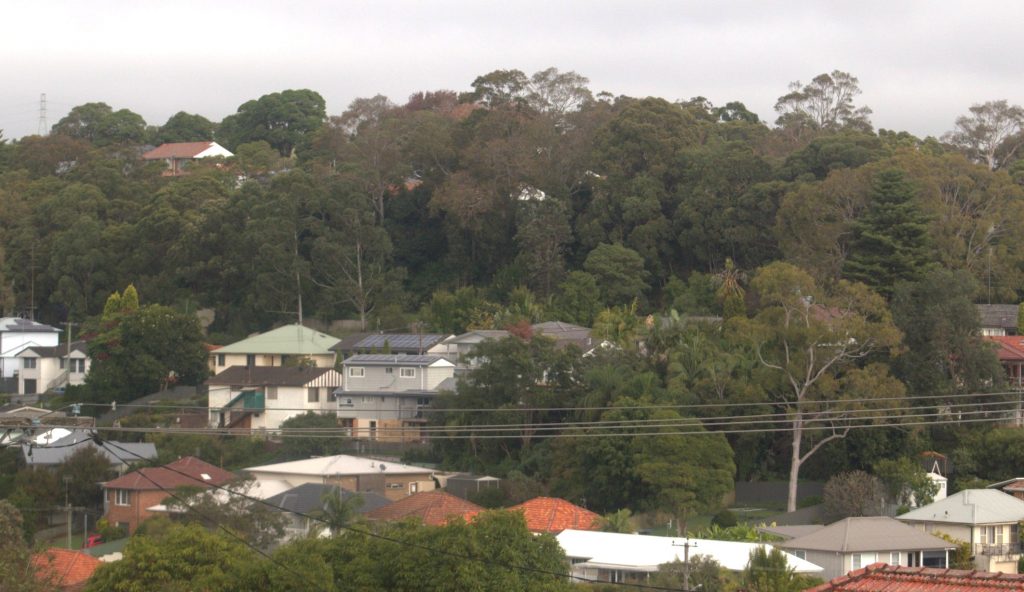
The article above was first published in the June 2022 edition of The Local.
Additional Information
The University of Newcastle Living Histories site has a photograph by Ralph Snowball of a tunnel of the Ebbw Vale colliery. At the time of writing the photograph is titled as “Ebbw Vale Colliery, New Lambton”, This is somewhat misleading as it suggests the mine was in New Lambton when in fact it was geographically located in Adamstown Heights.
The attribution to New Lambton is derived from Ralph Snowball’s listing on negative box 140, where he has recorded the photograph as “Ebbw Vale Tunnell New Lambton”. Note also that the next two entries are for “New Lambton Colliery”.
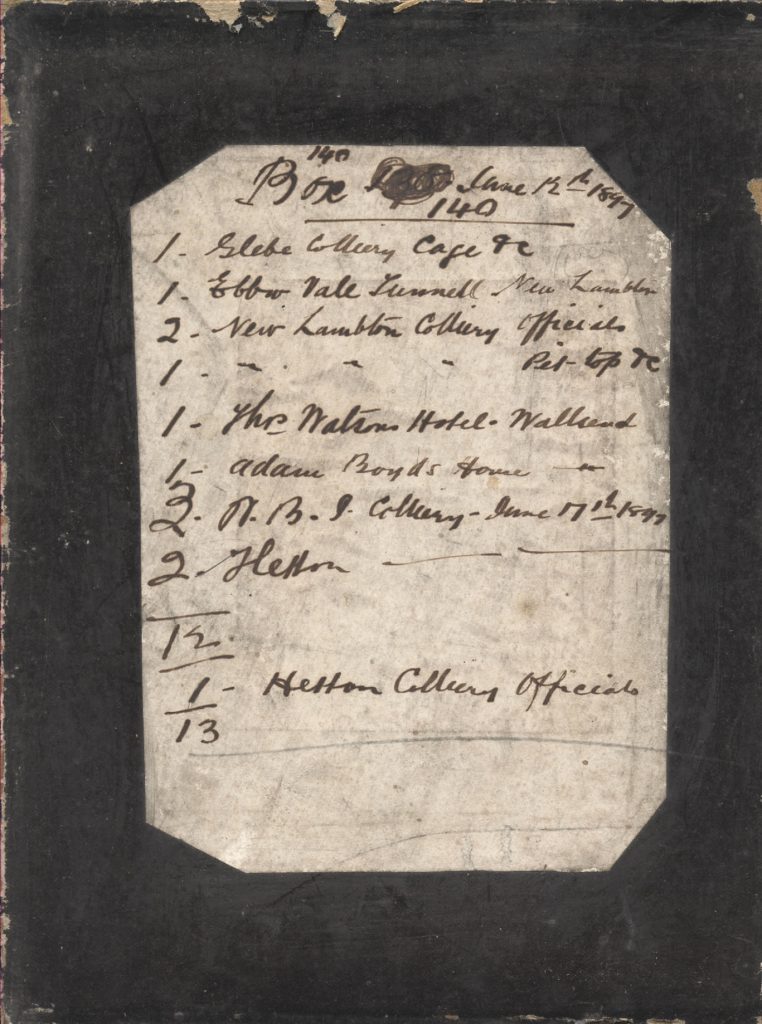
In 1897 the New Lambton Coal Company was operating their “C” Pit in Adamstown Heights. The Ebbw Vale colliery was adjacent to this pit, but the connection to it was more than just one of physical proximity.
The New Lambton “C” pit was commenced in 1884 with the opening of a 243 feet deep shaft to work the Borehole seam of coal. By 1886 the company had also opened a tunnel in the adjacent hill.
“The tunnel is near the New Lambton C. Pit, and the coal from both places goes over the same screens. The proprietors of the tunnel have leased the property of the New Lambton company …”
Newcastle Morning Herald and Miners’ Advocate, 1 October 1888.
This tunnel is described in an 1889 newspaper report …
Close to the shaft and going into the hill at the outcrop is a tunnel, by which the top or Burwood seam is worked. This tunnel is driven in a south-western direction for a distance of some twenty chains [400 metres], the seam being 8ft 10in in thickness, including a band of indurated clay 16in thick. It is worked on the pillar and bord system for about 5ft of its height, and is good steam coal. Owing to the dip of the seam which is 1 in 30 to the south ; the tunnel goes in at a good inclination, the empty skips finding their way to the end by gravitation, the full ones being hauled to the receiving floor, also used for the coal from the shaft by a wire rope con trolled by a 16-horse power engine.
Newcastle Morning Herald and Miners’ Advocate, 8 November 1889.
This new working seam was initially known simply as the “New Lambton Tunnel”, and was worked under the tribute system, where the owners of the mine (New Lambton Coal Company) leased it out to a third party to extract the coal. In 1889 the tunnel was being leased to Charles Pemberton and John Williams. Tribute mines by their nature were small and cost-cutting, which tended to lead to industrial disputes. Most of the newspaper reports on the New Lambton Tunnel in the years 1886 to 1889 relate to disputes between miners and management.
In 1889 the workings became known as Ebbw Vale colliery, although it was often subsequently still referred to as the New Lambton Tunnel. The Department of Mines annual report for the year 1889 lists it as “Ebbw Vale (late New Lambton C)”. In subsequent annual reports “New Lambton C” and “Ebbw Vale” are listed as separate entities, but they both had the same owner, the New Lambton Coal Company.
- The 1903 Department of Mines annual report notes that “Mr. L. H Lewington, legal manager, New Lambton Land and Coal Co. (Limited), gave notice of the appointment of Mr. Alexander McLeish as under-manager of Ebbw Vale Colliery.
- A newspaper report from 29 December 1905 refers to “Ebbw Vale pit, on the New Lambton Estate”
- A newspaper report from 1 July 1907 refers to “Ebbw Vale, formerly known as New Lambton”
A newspaper report from 1921 gives a brief description of the workings of the colliery at that time …
The Ebbw Vale colliery at Adamstown, about four miles from Newcastle, is owned by the New Lambton Coal Company, Ltd., and managed by Messrs. Dalgety and Company. The holding is 1017 acres, 640 acres free hold, 90 acres leased from private owners, and 287 acres held under mining act tenures.
It is a tunnel mine and is working the Victoria Tunnel seam, with a section of 5ft. 7in. about 4in. of which is stone and inferior coal. It is a good third-rate coal containing about 9 per cent of ash.
During 1920, 198 persons were employed, the output being 105,094 tons, put out in 246½ working days. The working is bord and pillar, the bords and pillars being eight and six yards wide respectively. Large areas of pillars have been worked, and at present, more than half the output is coming therefrom. Two small furnaces are ventilating the mine with about 50,000 cubic feet of air per minute. No gas has been met with and naked lights are used. The principal items of plant are: — 3 hauling engines, 3 boilers at 40lb. pressure. 1 rope driven pump, 175 railway waggons.
Associated with this mine is the New Lambton colliery close by. It has two shafts about 250 feet deep to the Borehole seam, but no work has been done therein for more than 20 years. Steps are now being taken, however, to sample test one of the seams lying between the Victoria tunnel and Borehole, probably the so called dirty seam, with the view of working the cleaner part of it.
The Newcastle SUn, 15 November 1921
By extracting data from the Department of Mines annual reports, we can graph the number of employees, injuries and fatalities during the lifetime of the Ebbw Vale colliery. Note the rapid growth in employees from 1903, following the closure of the adjacent New Lambton “C” pit.

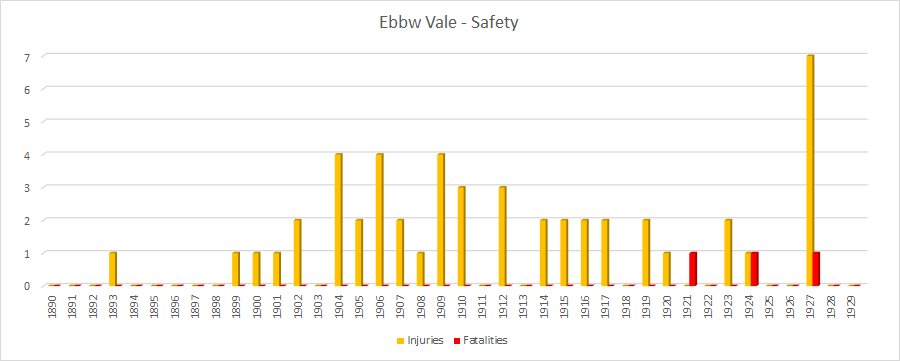
Location of the Ebbw Vale tunnel
A BHP Coal Geology map shows that Ebbw Vale colliery was to the south of Adamstown, adjacent to the New Lambton C Pit. It was to the east of the Redhead railway (now the Fernleigh Track), which I have highlighted in red below. The black and white dashed line to the east of the colliery is Brunker Rd.
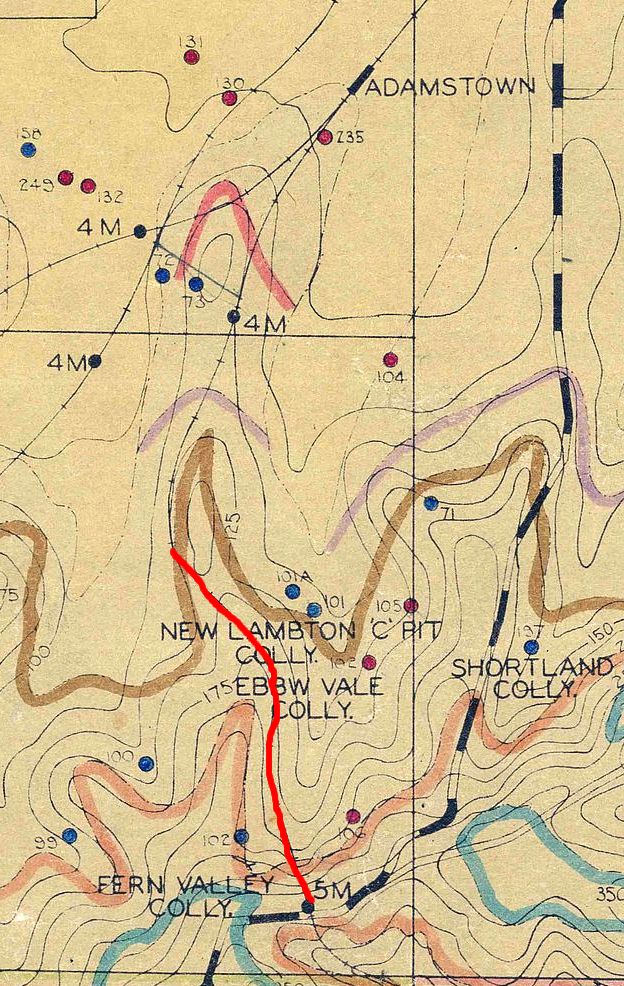
A 1953 map from the NSW Government DIGS site shows two annotations for “Ebbw Vale Tunnel”.
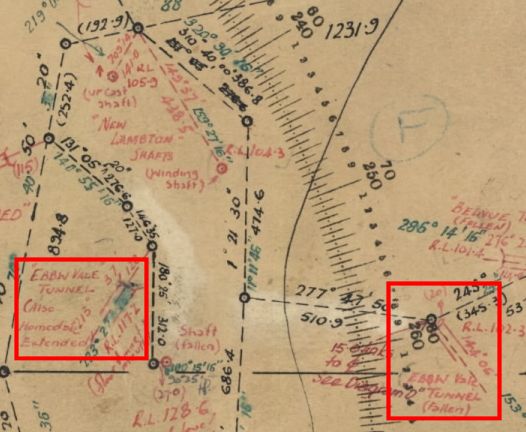
Overlaying the map into Google Earth, shows the approximate location of the Ebbw Vale tunnels in Adamstown Heights.

Looking from north to south we can see that the two tunnels were in either side of the valley where Claremont Avenue Reserve is now.
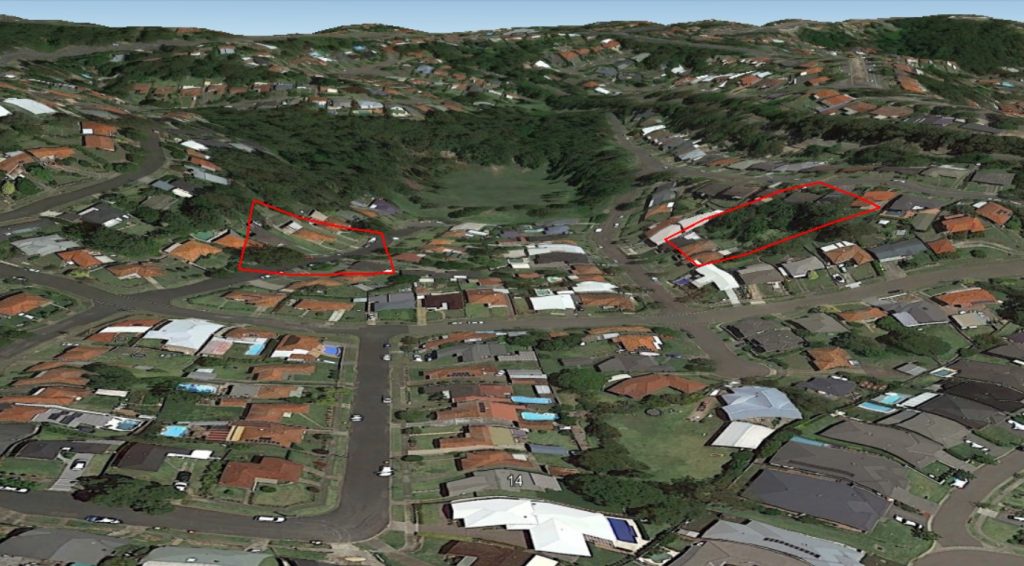
Brian Robert Andrews in his book “Coal, Railways and Mines, Vol 1” has a diagram on page 421 that indicates that the Ebbw Vale tunnel in the 1887 era was located on the western side of the valley, and that the rail track exiting from the tunnel ran down a slope towards the buildings and infrastructure of the New Lambton “C” pit. Given that the photo of the Ebbw Vale tunnel is looking down from a height, it is highly likely that Snowball photographed it from the top of the New Lambton “C” pit shaft poppet head.
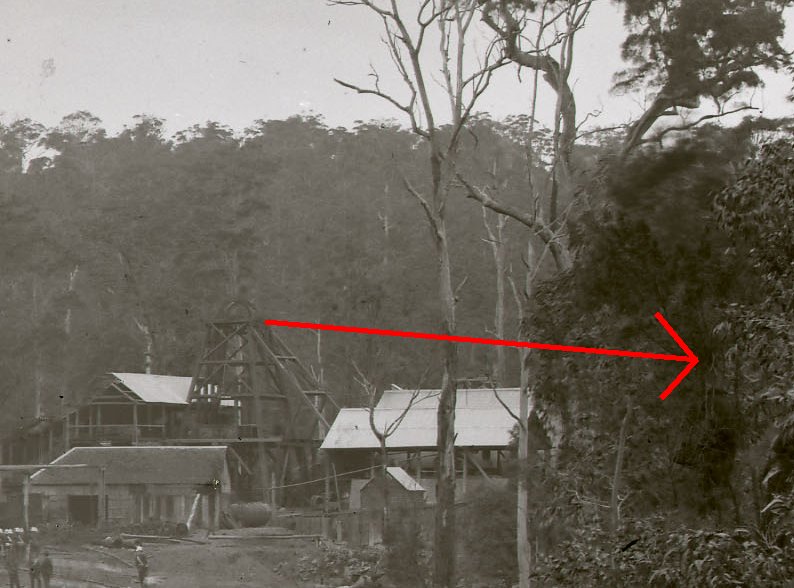
Newspaper articles
| Article Date Event Date | Notes |
|---|---|
| 29 Jun 1883 | Advertisement for the sinking of a shaft, probably the New Lambton "C" pit at Adamstown. "To Sinkers and Others. TENDERS will be received until SATURDAY the 30th inst., from parties willing to sink a SHAFT on the New Lambton Colliery Estates. Specifcatitons and particulars may be seen by applying to the undersigned. JAMES THOMAS, New Lambton Colliery Office, New Lambton." |
| 29 Sep 1886 | "THE NEW LAMBTON DISPUTE. The latest phase of this dispute was placed before the delegates last week, and has reference to the management letting what is known as 'the tunnel' on tribute." |
| 1 Oct 1888 | "The [New Lambton] tunnel is near the New Lambton C. Pit, and the coal from both places goes over the same screens. The proprietors of the tunnel have leased the property of the New Lambton company ..." |
| 20 Nov 1888 | "THE NEW LAMBTON PIT AND TUNNEL. YESTERDAY morning an interview took place at the office of Mr. Alexander Brown, J.P., between that gentleman, with Messrs. Charles Pemberton and John Williams, lessees of the New Lambton tunnel, now working on tribute, and Mr. R. Goundry, with Mr. Ridings, N. Lambton, on the subject of cavilling. Mr. Thomas, the manager of the N. Lambton Colliery, was also present." |
| 8 Nov 1889 | A description of the Ebbw Vale tunnel in 1889 … "Close to the shaft and going into the hill at the outcrop is a tunnel, by which the top or Burwood seam is worked. This tunnel is driven in a south-western direction for a distance of some twenty chains ..." |
| 24 Jun 1890 | In a report on work in the various pits, "New Lambton" and "Ebbw Vale" are listed as separate pits. |
| 8 Nov 1893 6 Nov 1893 | First recorded injury at Ebbw Vale colliery. "On Monday afternoon a miner named James Hall met with an accident in New Lambton Tunnel by which his left thigh was broken. Hall was engaged filling a skip, when a piece of top stone fell." Note that this report refers to the mine as the "New Lambton Tunnel" - the Department of Mines annual report for 1893 makes it clear that this was the Ebbw Vale colliery. |
| 22 Apr 1898 20 Apr 1898 | "On Wednesday evening the employees of the New Lambton and Ebbw Vale Collieries met in the long room of Thomas' Hotel for the purpose of making a presentation to Mr. James Thomas, colliery manager, who is about to take a trip to Europe for the benefit of his health." |
| 12 Jan 1903 | "On Saturday evening, at the Commercial Hotel, the officials and employees of the Ebbw Vale Colliery (New Lambton Tunnel) met for the purpose of making a presentation to Mr. Wm. Humphreys, underground manager, who is leaving the company's employ." |
| 29 Dec 1905 27 Dec 1905 | Death of Mr. Francis T. Filby. "Fourteen weeks ago the deceased, while working in the Ebbw Vale pit, on the New Lambton Estate, met with an accident, from the effects of which he ultimately succumbed." |
| 1 Jul 1907 | "Ebbw Vale, formerly known as New Lambton, miners, will resume work today, after being idle exactly half a year." |
| 5 Jul 1921 23 Jun 1921 | First fatal accident at Ebbw Vale colliery. William Adamthwaite was killed instantly having been struck by a fall of stone from the roof. |
| 15 Nov 1921 | Brief description of the Ebbw Vale Colliery. |
| 24 Jan 1924 | "In consequence of the inflow of water into portion of the workings of the New Lambton, or Ebbw Vale Colliery, at Adamstown, yesterday, work had to be suspended. The water gained access to the colliery through an old disused tunnel, which had been sealed off." |
| 15 Apr 1924 31 Mar 1924 | Second fatal accident at Ebbw Vale colliery. Joseph Lewis suffers spinal injuries from a fall of stone and coal on 31 March 1924, and subsequently dies of his injurues in Newcastle Hospital on 6 April 1924. |
| 2 Oct 1926 20 Sep 1926 | Death of David Waugh while working at Ebbw Vale colliery. "The coroner returned a verdict of death from fatty degeneration of the heat, in all probability accelerated by a strain received while at work." [As the death was due to illness and not an accident, it was not recorded as a workplace fatality in the official statistics.] |
| 29 Aug 1927 18 Jun 1927 | Third and final fatal accident at Ebbw Vale colliery. John William Liptrot was injured at the mine on 18 June 1921, when a collision with a runaway skip caused a file in his pocket to sever his knee. He survived this initial accident, but died in hospital of blood poisoning some 7 weeks later. |
| 12 Feb 1931 | "Approximately 150 men will be affected by the closing down of New Lambton Colliery. The decision was notified to the officers of the Miners' Federation by the secretary of the New Lambton Lodge to-day. The miners' northern president (Mr. T. Hoare) said this evening that the pit had not worked for three months, but that the definite announcement of the closure would remove hopes of renewed employment from the minds of the New Lambton men." |
| 10 Mar 1945 | "TENDERS are invited for the Purchase, for removal, of all Track Material contained in our private railway line extending, from near Adamstown Station to the site of the late Ebbw Vale Colliery. Full particulars from the office of the company, 31 Watt-street, Newcastle. NEW LAMBTON LAND & COAL CO. PTY. LTD." |

I found this really interesting as I am writing an article entitled ‘ The Ebbw Vale Tunnels’ Location though is at Ebbw Vale, Blaenau Gwent, Wales, UK. These tunnels were originally also used to mine coal and ironstone. 2 out of the 3 were deliberately driven through the local mountain side to link into the next valley to the west, about 1.5 to 2 miles as the ‘mole’ goes. So now I can truthfully say there are 4 E V tunnels. Thanks for putting the info out there. You may like to take a look at the website where some of our work gets to be published. I’m now the journal editor.